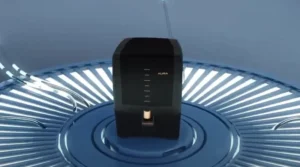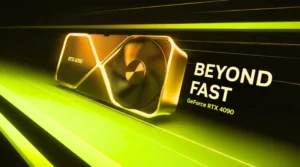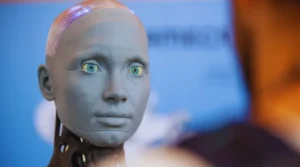Blog
Technology
accessibility and affordability, brain-machine interfaces, cognitive augmentation, communication technology, dependency on technology, Digital divide, Elon Musk's vision, ethical concerns, future implications, human-machine symbiosis, invasive procedures, medical advancements, Neuralink technology, regulatory frameworks, technological innovation
admin
Neuralink Unveiled: Exploring the Limits of Human-Machine Symbiosis
In an era defined by technological innovation, the boundaries between humans and machines are becoming increasingly blurred. One company at the forefront of this paradigm shift is Neuralink, a neurotechnology venture founded by entrepreneur Elon Musk. In this article, we delve into the intricacies of Neuralink and its implications for the future of human-machine symbiosis.
Introduction
Neuralink represents a bold endeavor to revolutionize the way humans interact with technology. At its core, Neuralink aims to develop implantable brain-machine interfaces that enable direct communication between the human brain and computers or other devices. This concept of human-machine symbiosis holds the potential to unlock new capabilities and reshape the way we perceive and interact with the world around us.
The Vision of Neuralink
Elon Musk, the visionary entrepreneur behind Neuralink, envisions a future where humans seamlessly integrate with artificial intelligence. By bridging the gap between biological and digital intelligence, Neuralink seeks to enhance human cognition, communication, and overall quality of life. Musk’s ambitious vision underscores the transformative potential of neural interfaces in reshaping the trajectory of humanity.
How Neuralink Works
Neuralink’s technology revolves around the development of implantable brain-machine interfaces (BMIs). These interfaces consist of tiny electrodes implanted into the brain, which can record neural activity and stimulate brain cells. By establishing direct communication channels with the brain, Neuralink aims to enable a range of applications, from restoring motor function in paralyzed individuals to augmenting cognitive abilities in healthy individuals.
Benefits of Neuralink
Medical Advancements
One of the most promising applications of Neuralink lies in the realm of healthcare. By providing direct access to the brain’s neural circuitry, Neuralink could revolutionize the treatment of neurological disorders such as paralysis, epilepsy, and Parkinson’s disease. These interfaces may enable precise monitoring of brain activity and targeted delivery of therapeutic interventions, offering hope to millions worldwide.
Enhanced Cognitive Abilities
Neuralink holds the potential to augment human cognition by integrating with artificial intelligence systems. Through seamless interaction with AI, individuals could access vast repositories of information, enhance learning capabilities, and make more informed decisions. This enhancement in cognitive abilities could have profound implications for education, research, and innovation.
Improved Communication
For individuals with communication disabilities or impairments, Neuralink offers a lifeline. By bypassing damaged neural pathways, these interfaces could empower individuals to express thoughts and ideas directly, transcending the limitations imposed by physical disabilities. This advancement in communication technology has the potential to foster greater inclusivity and connectivity within society.
Technological Innovation
Beyond its applications in healthcare and communication, Neuralink could spur technological innovation across various industries. The insights gained from studying the brain’s intricacies and developing sophisticated neural interfaces could fuel advancements in fields such as robotics, virtual reality, and human-computer interaction. By pushing the boundaries of human-machine interaction, Neuralink could unlock new frontiers of creativity and exploration.
Drawbacks of Neuralink
Ethical Concerns
The prospect of implanting devices directly into the human brain raises profound ethical questions. Issues of consent, privacy, and autonomy must be carefully addressed to prevent potential misuse of neural interfaces for surveillance or manipulation. Safeguarding against such abuses will require robust ethical frameworks and transparent regulatory oversight.
Invasive Nature
Neuralink’s current approach involves invasive surgical procedures to implant electrodes into the brain. While these procedures hold promise, they also entail inherent risks, including infection, tissue damage, and adverse neurological effects. Moreover, the long-term consequences of interfacing with the brain remain uncertain, necessitating thorough research and vigilant monitoring.
Digital Divide
As with many emerging technologies, there is a risk that Neuralink could exacerbate existing inequalities. Access to advanced neural interfaces may be limited to those who can afford them, widening the gap between the technologically empowered and the marginalized. Addressing this digital divide will require concerted efforts to ensure equitable access to Neuralink’s benefits, particularly in healthcare and education.
Dependency on Technology
A fundamental concern surrounding Neuralink is the prospect of over-reliance on technology at the expense of human autonomy and agency. As humans become increasingly dependent on neural interfaces for communication, cognition, and interaction with the world, there is a risk of diminishing creativity, interpersonal skills, and individual autonomy. Striking a balance between harnessing the potential of Neuralink and preserving the essence of human experience will be paramount in navigating this technological frontier.
Overcoming Challenges
Addressing the challenges associated with Neuralink will require a multifaceted approach. Ethical considerations must be integrated into the development and deployment of neural interfaces, ensuring that human dignity and autonomy are upheld. Regulatory frameworks must be established to safeguard against potential abuses and protect individuals’ rights and privacy. Additionally, efforts should be made to enhance accessibility and affordability, ensuring that the benefits of Neuralink are accessible to all.
The Future of Human-Machine Symbiosis
As Neuralink continues to advance, it holds the potential to reshape the fabric of society and redefine the boundaries of human potential. The integration of neural interfaces into daily life could lead to profound societal transformations, from healthcare and education to entertainment and beyond. However, navigating the ethical and societal implications of human-machine symbiosis will require ongoing dialogue, collaboration, and foresight.
Conclusion
In conclusion, Neuralink represents a groundbreaking leap forward in the quest to merge humans with machines. While the technology holds immense promise in terms of medical advancements, cognitive augmentation, and technological innovation, it also poses significant ethical, social, and practical challenges. By embracing the possibilities while addressing the challenges, we can chart a course toward a future where human-machine symbiosis enhances, rather than diminishes, the human experience.
FAQs
What is Neuralink?
- Neuralink is a neurotechnology company founded by Elon Musk with the goal of developing implantable brain-machine interfaces.
How does Neuralink work?
- Neuralink aims to establish direct communication between the human brain and computers or other devices through tiny electrodes implanted in the brain.
What are the potential benefits of Neuralink?
- Potential benefits include medical advancements, enhanced cognitive abilities, improved communication, and technological innovation.
What are the main concerns surrounding Neuralink?
- Ethical concerns include issues of consent, privacy, autonomy, and the potential for misuse of neural interfaces.
What does the future hold for Neuralink and human-machine symbiosis?
- The future of Neuralink hinges on addressing ethical, societal, and practical challenges while embracing the transformative potential of human-machine symbiosis.














Post Comment